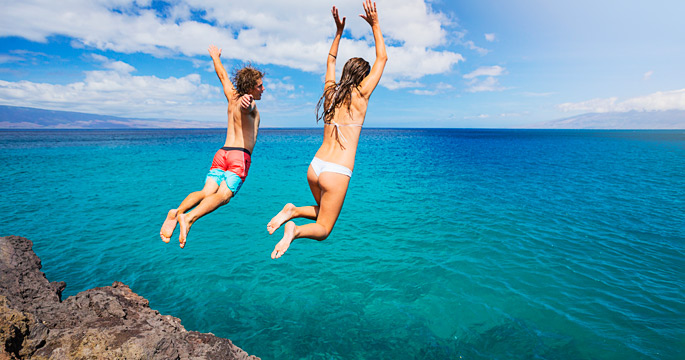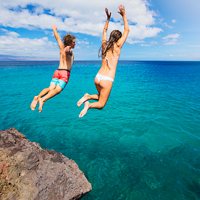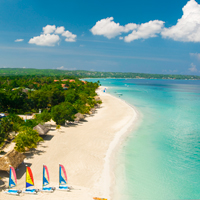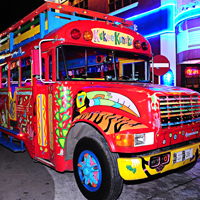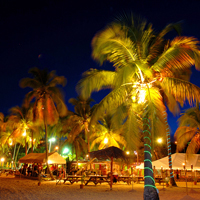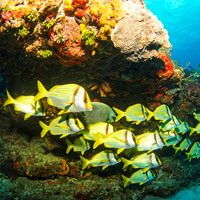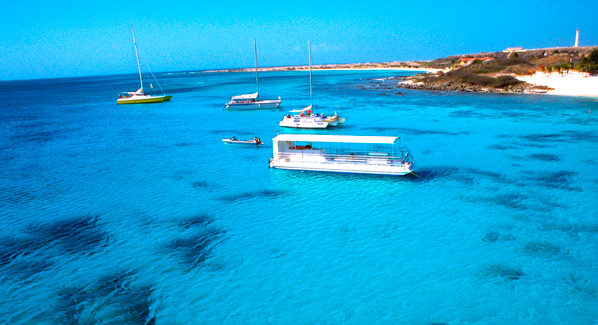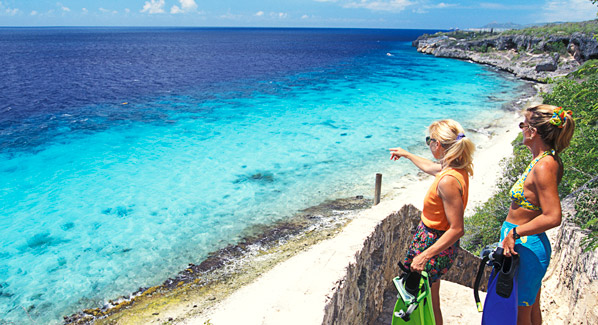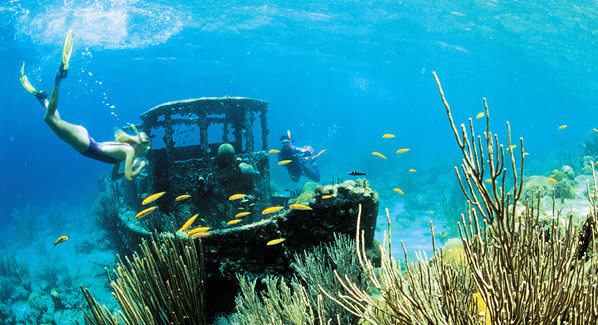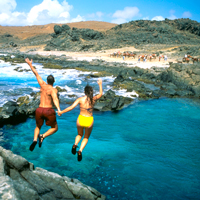Most of us access Caribbean waters via the beach. It’s safe, easy and relaxing. But if you want to shake things up a bit, you can also find places suitable for a leap of faith. Adventurous types willing to trek through underbrush and scramble over rocky bluffs know of dozens if not hundreds of elevated launch points through the region. But if you are looking for a known quantity that’s easy to reach and safe to try, you might want to consider these five, which we have arranged in ascending order from mild to wild.
Conchi, Aruba
A visit to Aruba’s favorite natural swimming hole will take you through the island’s rugged interior to the windswept eastern coast and Arikok National Park. The journey to the site, which is known as either Conchi or Cura de Tortuga will require four wheel drive or a sturdy horse—so most people just sign up with a guide. Once there, a small lagoon is flanked by boulders that shelter swimmers from breakers that foam and surge against the outer rocks. Bathers jump in from one of several points around the pool, most at heights of ten feet or less. The main attraction isn’t the drop, but the stark beauty of this isolated site.
Ricks Cafe, Jamaica
The Caribbean’s best-known cliff jumps take place on Jamaica’s West End cliffs. A mile outside of Negril, Rick’s Cafe perches on the edge of the cliffs, providing panoramic views of the Caribbean and the area’s best sunsets. Here, an undercut cleft in the coastal facade creates an inciting turquoise cove that jumpers can’t resist. Youngsters and the less adventurous can begin at lower stations that promise easy entry. Bolder souls can propel themselves from the top of the cliff to drop 35 feet into clear water, while local performers mount makeshift platforms or shinny up cliffside trees to leap from even greater heights. Anyone who jumps can almost assuredly be guaranteed a cliffside audience, and plenty of encouragement.
Boca Slagbaai, Bonaire
A drive along the dirt roads of Bonaire’s Washington Slagbaai National Park will bring you to Boca Slagbaai, where a weathered limestone outcropping overlooks the southern end of the bay. After enjoying some refreshments at the adjacent waterfront restaurant, make your way through the scrub and cactus-covered slope to the edge of the cliff, where you’ll enjoy a sweeping view of the north coast as you gather your nerve for the 25-foot plunge. Showoffs have just enough time for a quick flip. Otherwise it’s an easy feet-first entry and a 30-yard swim back to the beach. The spot gets popular by mid afternoon, but the fun stops by four, as the park closes early.
Playa Forti, Curacao
A leap from the cliffs at Curacao’s Playa Forti isn’t for the faint of heart. With a drop of nearly 40 feet to the water, it takes nerve to edge out onto the small platform that locals have constructed as a launch point. Commit and you have an adrenaline-charged drop into 20 feet of clear Caribbean water. The path to the jump zone follows a ledge running between the cliff edge and the low walls of an open-air restaurant that perches on the bluff. After the drop, you’ll have a reasonable swim over to the beach, and some stairs to climb back up the parking area. This site in Curacao’s Westpunt region is well known, and most anyone on the island can provide directions.
Maho Cliff, St, Martin
Located just off the airport runway, St. Martin’s Sunset Beach provides safe thrills each time a landing jetliner thunders mere feet overhead. Anyone wanting to take flight themselves can walk up the beach towards the Sonesta Ocean Point Resort, and make their way through the hotel grounds to the cliff face at the western edge of the property. The drop is nearly 40 feet—plenty for most—but true adrenaline junkies can substantially up the ante by accessing the flat roof of the hotel. A running leap propels the brave and possibly foolish into an 80-foot free fall. From either height, there’s plenty of time to relive the jump as you make the 200-yard swim back to the beach.

